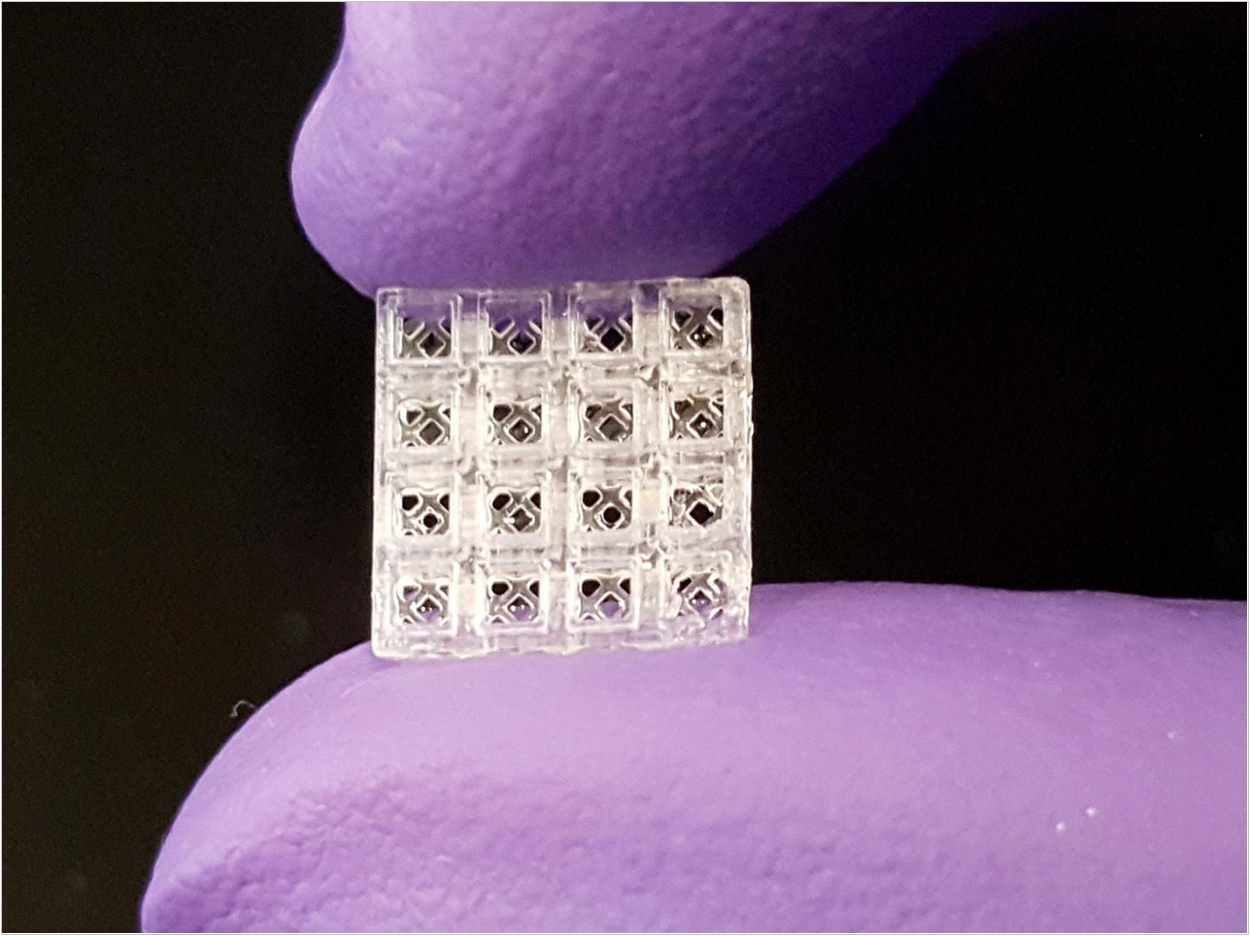
Oregon Health & Science University (OHSU) has developed tiny 3-D printed hollow bricks inspired by Lego blocks that can heal broken bones and may one day lead to lab-made organs for human transplant. The bricks serve as scaffolding where hard and soft tissue can regrow better than today’s standard regeneration methods, according to the researchers.
“Our patent-pending scaffolding is easy to use. It can be stacked together like Legos and placed in thousands of different configurations to match the complexity and size of almost any situation,” said Luiz Bertassoni, PhD, who led the technology’s development.
Bertassoni, an associate professor in the OHSU School of Dentistry and an associate professor of biomedical engineering in the OHSU School of Medicine, partnered with colleagues from OHSU, the University of Oregon, New York University, and Mahidol University in Thailand to develop and evaluate the technology.
When stacked together, the microcages are designed to repair broken bones better than today’s methods, the researchers said. Orthopedic surgeons typically repair more complex bone fractures by implanting metal rods or plates to stabilize the bone and then inserting biocompatible scaffolding materials packed with powders or pastes that promote healing.
Also, the hollow blocks in this scaffolding system can be filled with small amounts of gel that include various growth factors that are precisely placed closest to where they are needed. The researchers found that growth factor-filled blocks placed near repaired rat bones led to about three times more blood vessel growth than conventional scaffolding material.
“The 3-D printed microcage technology improves healing by stimulating the right type of cells to grow in the right place and at the right time,” said study coauthor Ramesh Subbiah, PhD, a postdoctoral scholar in Bertassoni’s lab who specializes in growth factor delivery. “Different growth factors can be placed inside each block, enabling us to more precisely and quickly repair tissue.”
The small, modular devices can be assembled to fit into almost any space. When piecing together block segments including four layers of four bricks by four bricks, the researchers estimate that more than 29,000 different configurations can be created.
The researchers also imagine that their 3-D printed technology could be used to heal bones that have to be cut out for cancer treatment, for spinal fusion procedures, and to build up weakened jaw bones ahead of a dental implant.
And by changing the composition of the technology’s 3-D printed materials, the researchers envision it also could be used to build or repair soft tissues. With significantly more research, they hope the modular microcage approach could even be used to make organs for transplant.
The researchers will further explore the microcages’ performance in bone repair. They plan to test the technology’s ability to repair more complex bone fractures in rats or larger animals.
The study, “3D Printing of Microgel-Loaded Modular Microcages as Instructive Scaffolds for Tissue Engineering,” was published by Advanced Materials.
Related Articles
Treatment Ensures Long-Term Implant Success After Sinusitis
Harvard Licenses Tough Gel Adhesive Technology to Amend Surgical
Implant Coating May Suppress Inflammatory Responses












